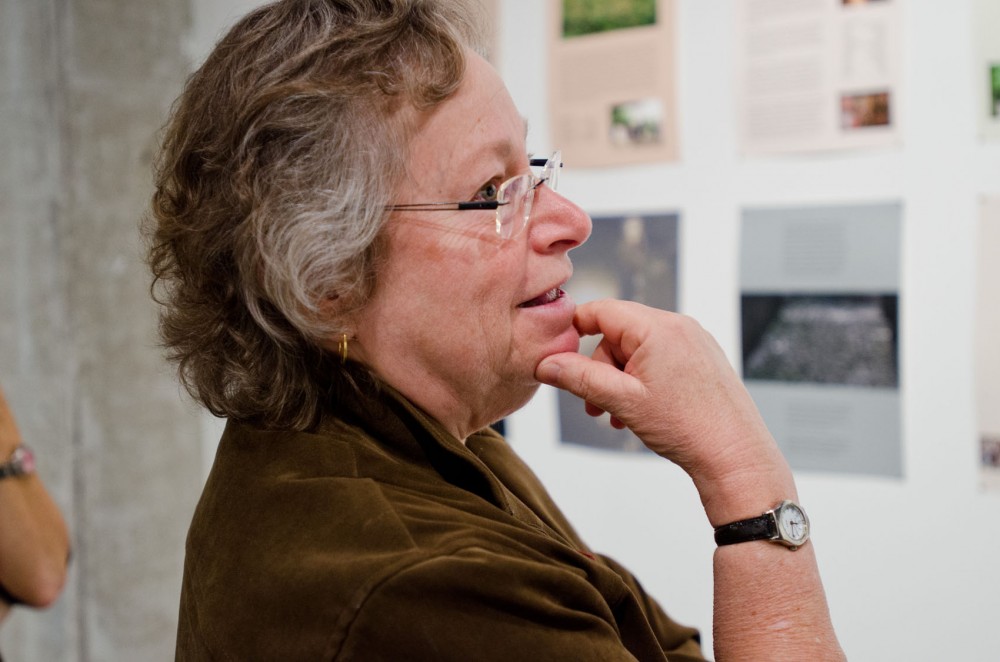What: “shadows traces undercurrents” public reception
When: 6 p.m., Thursday
Where: Katherine E. Nash Gallery, Regis Center for Art, 405 S. 21st Ave., Minneapolis
Discarded thoughts in the form of scraps of paper line the walls of artist Rebecca Krinke’s writing-room-turned-art installation. As one of the many pieces in the Nash Gallery’s “shadow traces undercurrents,” Krinke maps unknown territory by displaying the public’s scrawling alongside the small enclosure.
“Shadows traces undercurrents” gives a platform for communities where none exists — paintings, photographs, maps and installations all wrestle with this central idea.
Krinke’s room — a small enclosure complete with a wooden desk, pad of paper and a pen — seeks to spark a conversation as visitors air grievances or spill their guts to answer the question in the installation’s title, “What Needs to be Said?”
“Being a sculptor, I make objects,” Krinke said. “Being a public artist or social practitioner, I’m really interested engagement with people, community, the public.”
The landscape architect and professor at the University of Minnesota is a part of “Mapping Spectral Traces,” an international artist collective that uses interdisciplinary methods to engage with subjects. For Krinke, this means providing a physical space for social dialogue where Facebook and Twitter fail to realize. The opening of “shadows traces undercurrents” brings the talents of Krinke and a host of local and international artists to delve into a wide array of issues including social, ecological and agricultural topics.
Co-curator Joyce Lyon, also a University associate professor, borrows “Mapping Spectral Traces” artist Iain Biggs’ term for the wide-ranging lens.
“This ‘deep mapping’ is going to every possible layer that we can find and finding new ways to talk about that through art,” Lyon said.
When Krinke operated her writing room out of an empty storefront on University Avenue, the dialogue proved fruitful among passersby and curious writers. One man passed by Krinke’s project, brooding on the neon sign’s burning question.
“He said, ‘I just thought about that for three days, and I had to come in and finally find you,’”**** Krinke said.
Krinke’s room provides a physical written discourse where other means of expression may not take place. The man, moved by the piece’s mode of expression, asked her to display the exhibit at a cemetery.
“He just had all these thoughts about it,” Krinke said. “And he didn’t write, but he just really had thoughts about what needs to be said.”
The cross-disciplinary exhibit also functions as a gateway to exploring issues related to the environment, as co-curator Christine Baeumler’s art seeks to understand. Baeumler, an associate professor at the University, collaborated with an ecologist and engineer to put a tamarack bog on top of a roof of Minneapolis College of Art and Design. The reconstituted wetland displays the biodiversity a bog represents in an urban setting, often devoid of life.
“We’ve really drained the landscape,” Baeumler said. “So part of the idea behind the rooftop tamarack bog was raising awareness about these ecosystems that have disappeared.”
For “shadows traces undercurrents,” Baeumler holds a desk and live feed of the rooftop bog for observers to view. The professor’s environmentally conscious work highlights the efforts of the “Mapping Spectral Traces” network, focused on highlighting unseen or neglected subjects. For Baeumler, art, engineering and ecology can inform one another.
“As far as I know, no one’s really tried a tamarack bog on a roof,” Baeumler said. “As an artist, I feel that one of my roles is that I can create one these new avenues for trying out ideas that other people haven’t tried yet. It’s just not something an engineer or ecologist would propose.”














